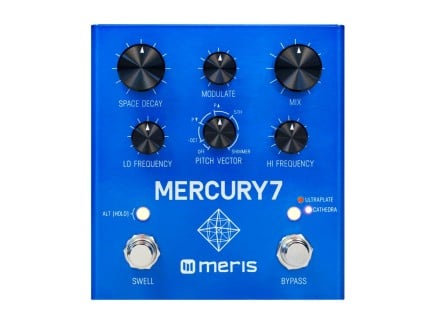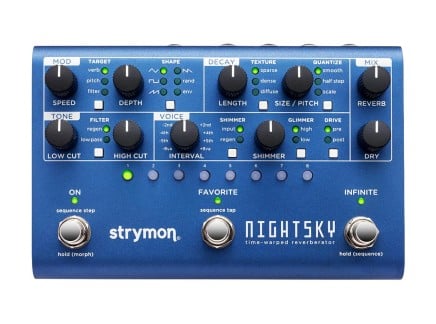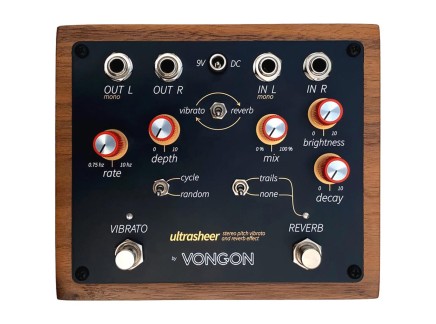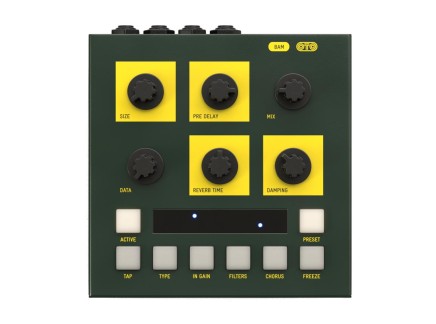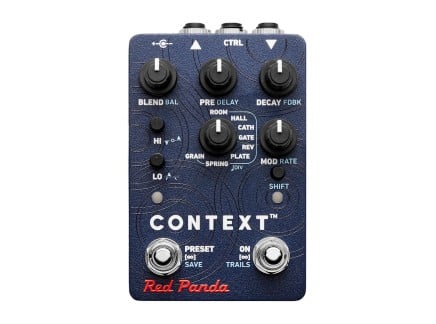We've talked about the history of reverb before—but today, we live in a time where digital processing is so advanced that reverb effects can act like entire instruments in their own right. Moreover, reverb has evolved from being simply a natural phenomenon in large spaces to being a tool that can fit into your pocket, or on your pedalboard...and given the insane number of ways a reverb effect can be designed, every processor is different, bringing their own unique quirks and workflows to the table.
We recently reached out to some our Internet Pals to ask about their favorite recent gear—specifically, we wanted to know: what is the best reverb pedal out there?
Effect pedal aficionados Dexba, Slow Haste, and Cyberattack offered their answers, each focusing on a distinctly awesome pedal for creating deep atmospheres, cavernous spaces, and warps in the fabric of sonic reality. Check out the video above for a blow-by-blow of their picks, and read on for some of the highlights of each pedal.
Today, we're talking about the Chase Bliss/Meris CXM 1978, the Meris Mercury 7, and the Strymon Nightsky.
Dexba's Pick: Chase Bliss / Meris CXM 1978
CXM 1978 is a collaborative effort from Chase Bliss and Meris—two of the finest effect pedal companies currently in operation. Taking significant inspiration from 1978's iconic Lexicon 224, CXM 1978 is all about exploring the sonic quirks and unique possibilities offered by early digital approaches to reverb.
We believe it is fair to say that CXM 1978 is currently the most flexible stereo reverb pedal available. It excels at creating unrealistically long, exaggerated decays, creating an instant state of vastness without compromising the clarity and intelligibility of the input signal (it just doesn't get muddy!).
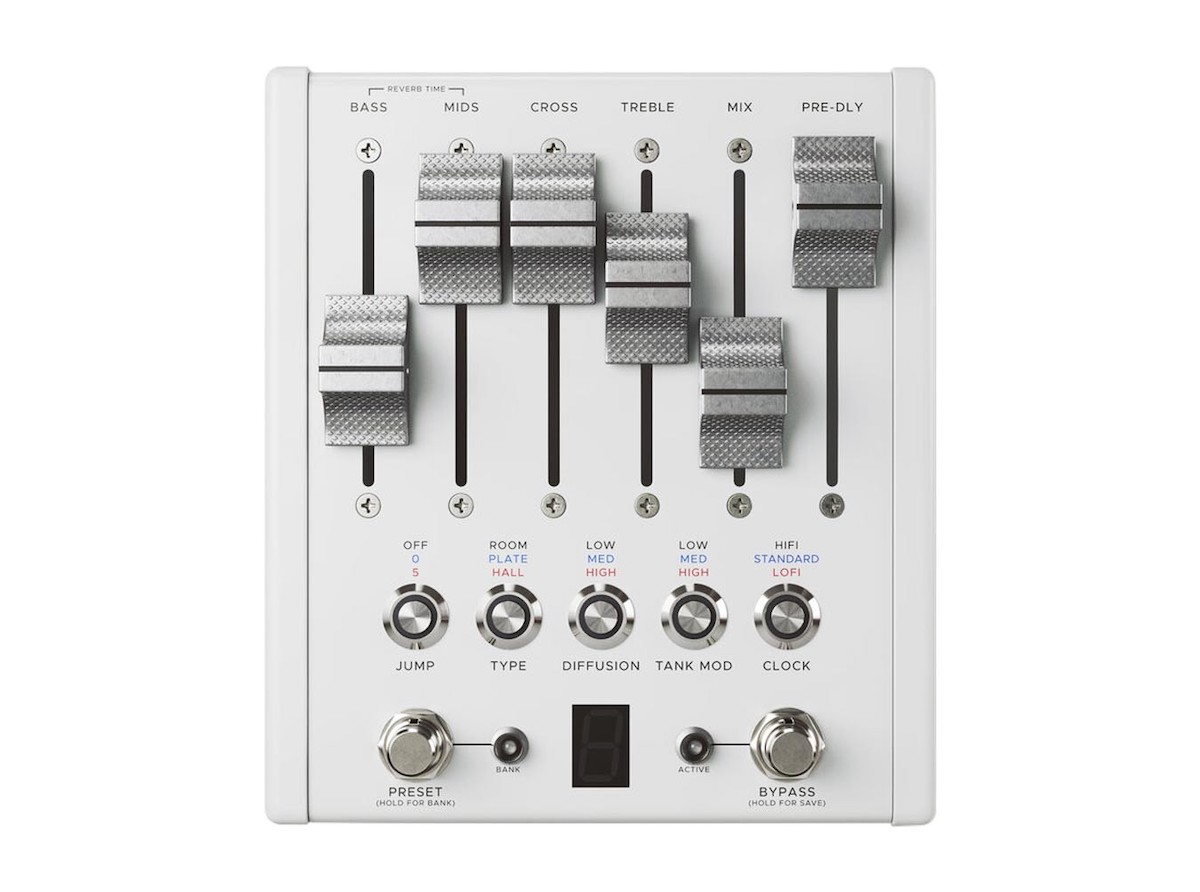
CXM 1978 uses six motorized faders and RGB LED-backlit buttons in order to provide instant visualization of its state—quite important, given that it has internal preset memory. So, when you switch presets, all of the panel controls reset themselves so that what you see is always what you get.
The motorized faders control decay time for the bass and mids, crossover frequency between the bass and mid bands, treble balance, wet/dry mix, and pre-delay amount. The buttons determine the reverb type/algorithm (Room, Plate, Hall), diffusion type (for everything from pristine audio to smeared attacks), tank mod (a modulation control with low/med/high settings), and clock (an audio quality setting ranging from modern hi-fi all the way to lo-fi reverbs with continuously variable clock rates down to 2.4kHz). Between these settings, you can dial in everything from authentic-sounding Vangelis verbs to modern, glistening textures, and all the way to insane, gritty, lo-fi digital smears. It's amazing.
CXM 1978 holds up to 30 presets, offers MIDI control of all parameters, and simply sounds incredible. If you're looking for a premium reverb guaranteed to add a beautiful sense of space to any sound, it's one of the best things available. As of the time of publishing this article, Perfect Circuit does not sell the CXM 1978, as Chase Bliss has opted to switch to a direct-to-consumer sales model—so if you want one, definitely go check it out on their site.
Slow Haste's Pick: Meris Mercury 7
Slow Haste's pick takes us even farther into the deepest reaches of space. Another brilliant, Vangelis-inspired stereo reverb from the creative minds at Meris, the Mercury 7 gives you a taste of the endless atmospheres from CXM 1978...but with a number of distinct tricks up its sleeve, perfect for sculpting unreal spaces and constant transformations of sound. While it can easily handle "realistic" reverbs, it excels at creating ambient textures that combine conventional plate and cathedral-style reverbs with feedback and pitch shifting.
Mercury 7 offers two reverb modes: Ultraplate and Cathedra. Ultraplate, true to its name, offers subtler plate-like reverbs that sit well in any mix. The Cathedra algorithm offers deeper, more enveloping textures that can truly take on a life of their own. Each algorithm offers controls for space decay, low and high frequency damping, wet/dry mix, modulation, and pitch vector—the amount of pitch shifting introduced in the reverb's feedback loop.
The pitch vector control is where much of the pedal's distinct magic lies, offering octave and fifth reverbs as well as a multi-octave shimmer. These shimmer/pitch shift textures can take the simplest of inputs and turn it into a huge, blooming mass of tone. Moreover, the Swell footswitch allows instant access to infinite blooms, making it highly performable.
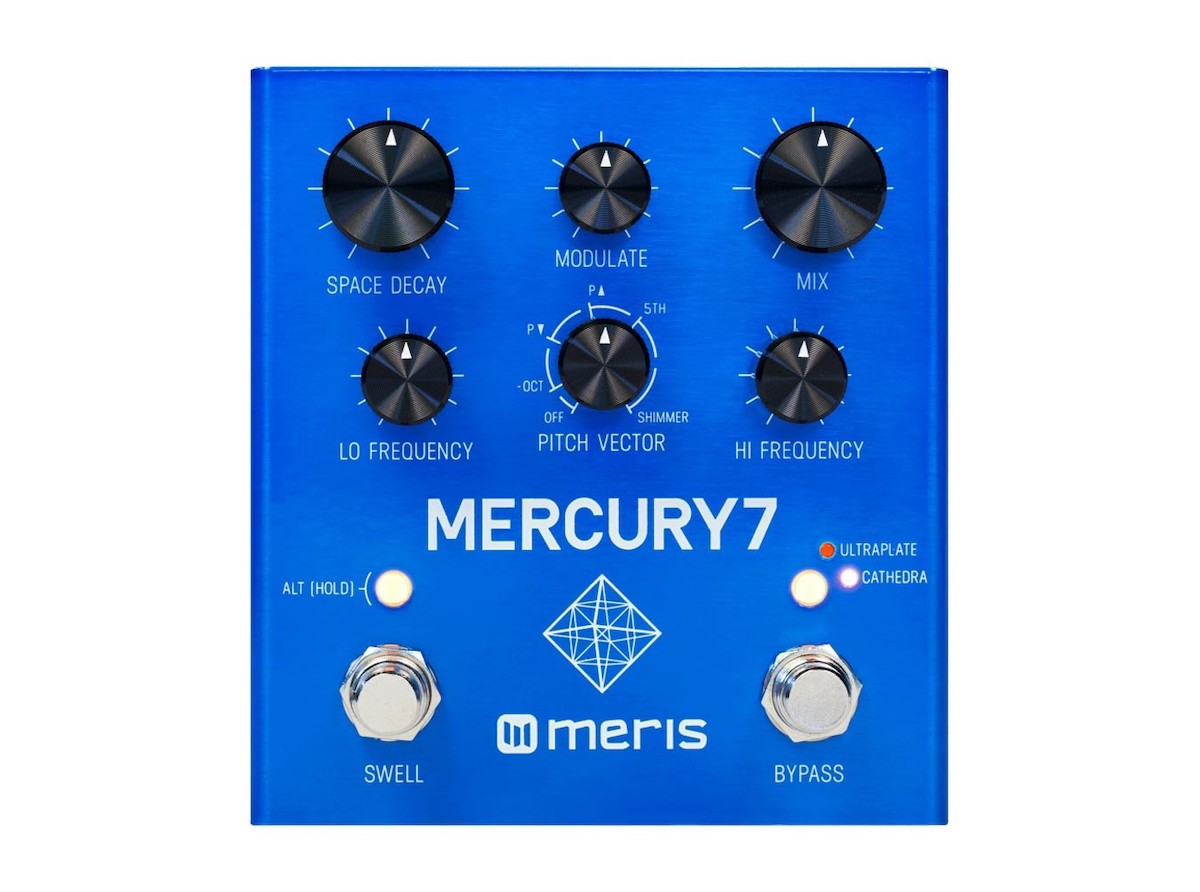
Like other Meris pedals, the Mercury 7 features a hidden layer of additional features, allowing control of modulation speed, predelay, pitch vector mix, vibrato depth, density, and Swell attack time. And again, like other Meris pedals, every parameter can be controlled via external expression pedal, with independently definable heel-down and toe-down values. This allows for performative morphing of spaces, intense pitch warps, smooth blends, and more—turning it into one of the most playable reverb pedals available.
Cyberattack's Pick: Strymon Nightsky
Cyberattack takes us in a slightly different direction, aligned with his typical unconventional uses of effect pedals. He introduces us to the Strymon Nightsky—another pitch-shifting stereo reverb pedal capable of everything from huge, spacious verbs to...well, quite un-reverb-like behavior, from wacky pitch shifting to vibrato, chorus-like sounds, and other modulation-like effects.
Nightsky's controls are organized in five primary sections: Mix, Decay, Tone, Voice, and Mod. Mix is simple enough, offering continuous individual control of your wet and dry signal levels. Decay offers control length, texture (a diffusion control), size/pitch, and quantization of the reverberated signal (with options for smooth, half-step, or scale settings. That's right—you can create reverb settings that can be transposed, pitch modulated, or even MIDI controlled/sequenced, turning your reverb into a playable instrument.
The Voice controls offer access to "shimmer" and "glimmer"-style reverbs, with variable drive and a number of options for pitch shifting interval in the reverb feedback loop, great for all those smears, blooms, and pitch-warped textures. You also get a pre/post drive control for dialing in exactly the right tone. The Tone controls offer low cut and high-cut filtering, great for dialing in a solid spectral balance...but it also offers 24dB/oct lowpass filtering with variable resonance, great for adding synth-like character to your reverb tones.

The Modulation section allows for continuous modulation of the reverb, pitch shifting, and filtering. It offers controls for LFO rate, modulation depth, and modulation shape, with options for triangle, square, saw, ramp, random, and envelope-based modulation. This flexibility of modulation turns Nightsky into something much more than just a classic reverb: it's a means of exploring reverb as an instrument, using synthesizer-like techniques to craft playable tones, textures, and continuous sonic evolutions. In fact, the Strymon Starlab is very much like a Nightsky in Eurorack synthesizer module form...taking these ideas and applying the possibility of voltage control, along with easy integration into modular synthesis contexts.
There's Enough Space for All of Us
Of course, these are the tip of the iceberg—there's no shortage of amazing reverb pedals out there, from digital masterpieces to murky spring reverbs and more.
Looking to explore more? Check out our selection of reverb effects at Perfect Circuit!

